When I first joined Brightside back in October 2022, I was super excited to work for a brewery and finding out about how to brew beer (plenty of people around me were jealous of me for “working with beer all day”). I came on board as an assistant to Carley in the office, but I knew I wanted a day downstairs learning about how to brew beer with Martin, and to my surprise, Carley agreed and let me loose! This is my account of everything I learnt during that day, from the best moments to the stuff you drinkers don’t need to think about when sipping on a pint!
The day started at 6am for me, and let me tell you, waking up at the crack of dawn was no easy task! But this is what I signed myself up for, because you’ve got to be up early when it comes to making beer… apparently. After a couple of coffees, I was feeling caffeinated and ready to get started. The first thing I came to was a pile of ingredients that had been weighed out the night before and quickly, I had to figure out what was what. Luckily, Martin was on hand to explain which grains we were using and what beer was being brewed on the day – I was happy to learn we were brewing Maverick, which is one of my favourites here!
We also had a look at a run down of the day’s tasks – This included making sure we had enough hot water for brewing, as well as other jobs that we’d have to get done. I’m not going to lie, it’s not all glamourous, but more on that later.
By this point, we knew what beer was being brewed and we had hot water at our disposal ready to start. As part of our preparation, Martin had me checking the equipment we were going to be using and making sure it was sterile and safe to use for beer production as well as making sure the areas we’d be working in were tidy and organised. You never know when you’ll need to grab something when you’re already juggling 3 other jobs!
Back to those all-important ingredients, because it’s finally time to start putting them to work. As we were brewing Maverick on this day, we were using lightly caramelized malts to provide the foundation that we then mixed with American Cascade hops which bring bold grapefruit and floral aromas to the beer. The hops used here really are the main attraction in Maverick.
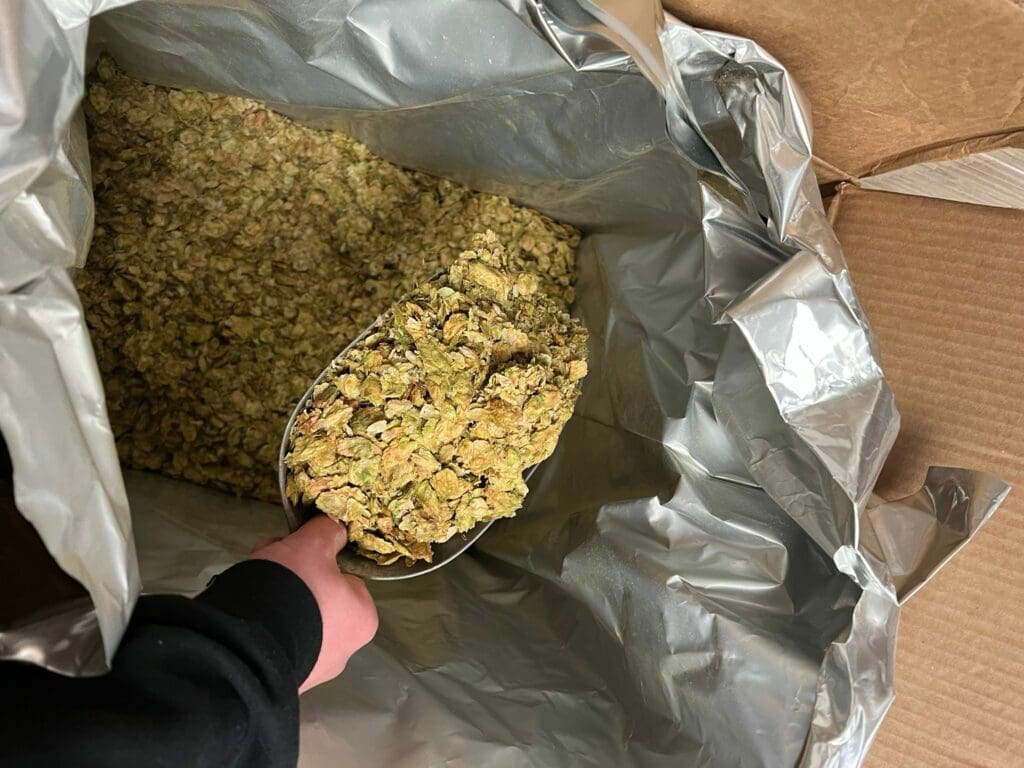

If we were brewing anything darker, we might be using a rich and dark malt blend to enhance the colour of something like a stout or a mild beer. While we weren’t brewing a dark beer on this day, you can see what our darker malts look like below.


Coming back to Maverick and it’s time to use my muscles. Each grain bag weighs around 25kg, and they all need emptying into the hopper which sits above our mash tun. It’s hard and laborious work but there’s only one way of getting those grains where they belong!
Malt has a few purposes in beer. It provides the sugar which will be fermented into alcohol (kind of important when brewing beer), as well as forming the base for the flavour profile and enhancing the colour of the beer. By combining with hot water , it means we’re able to extract as much as possible from the grains which will be important when they go into the mash tun.






Hops on the other hand are all about the aromatics – Think of it almost as adding seasoning to a food dish. Martin was able to show me a few different hops we have in the brewery, such as: Cascade, Amarillo, Citra and Simcoe. These hops come in different forms, some are packaged to us as whole cone hops and some come in as pellets – We use our hop pellets in most beers but where a beer requires dry hopping, we may use whole leaf hops which are more delicate and are typically used later in the brewing process.
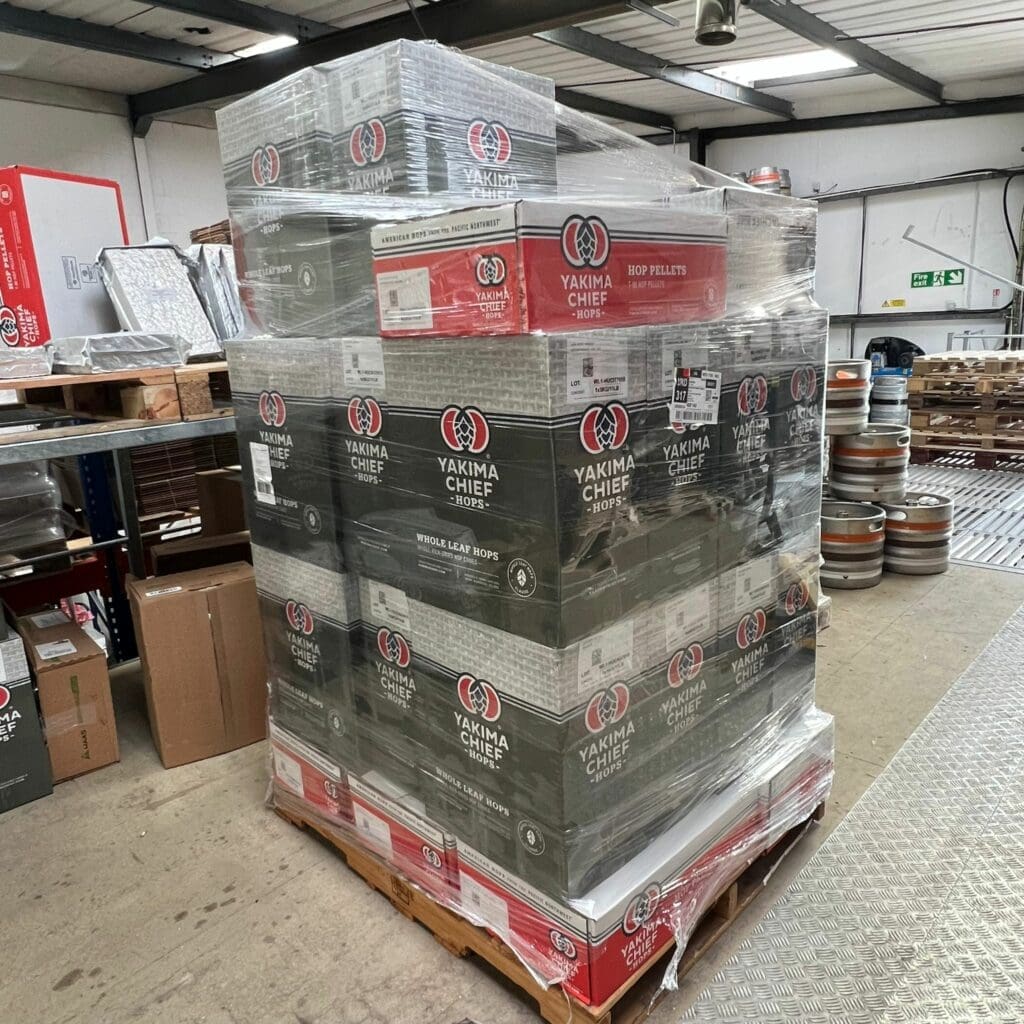

That’s enough talking about the ingredients, it’s time to start turning them into beer! We began moving the milled grains into the hopper above the mash tun by gradually adding them into the tun vessel itself. As I was adding the grains from the hopper, Martin was adding the hot water with the ideal being the correct amount of water being added by time the last of the grain was added into the mash tun.


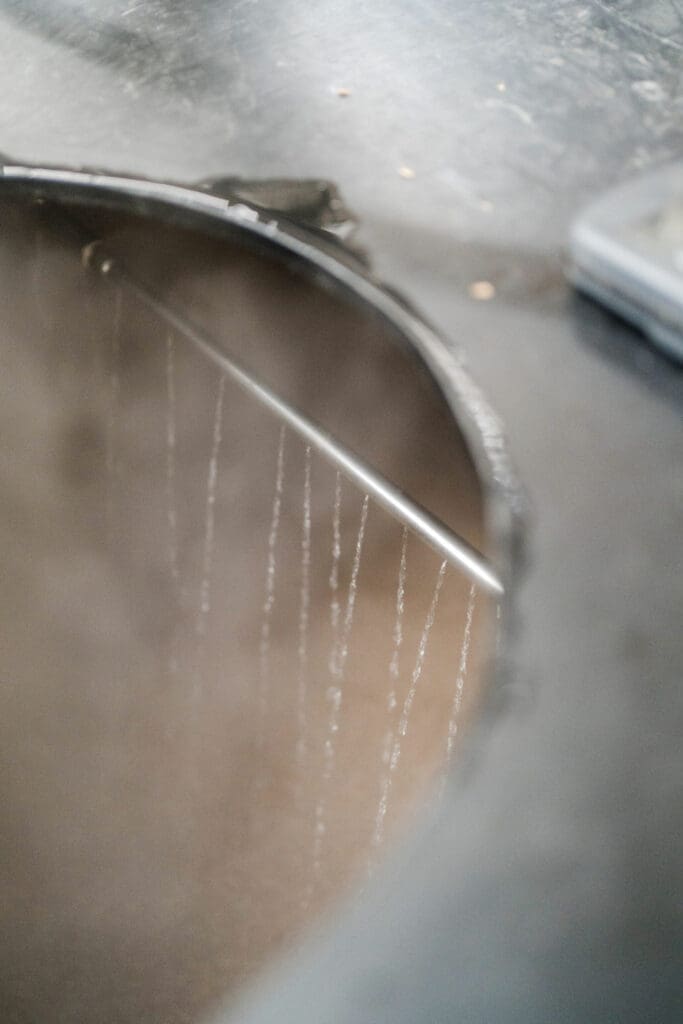

As the grains begin steeping in the water, those sugars I mentioned earlier start to diffuse out into the mixture and it’s this grainy/liquid combination which we call the wort. We kept the mixture at a constant temperature of 64 degrees Celsius and left them to work their magic for about an hour. By this point, the brewery was smelling amazing!
As we were brewing using relatively light malts, we didn’t have a load of colour in the mash tun but should we have been brewing a stout for example, the wort would have been turning a deep, dark (almost black) colour and the complex flavours associated with darker beers would have been present within the mixture.
During the mash, we circulated the wort back upon itself to keep the liquid moving and to help extract as much possible during this part of the process.
Once we were done with mashing, we had to then separate out the solids from the wort. To do this we moved the liquid through a filter and began filling the boiling tank with the wort. This left us with a nice bed of used malts in the bottom of the mash tun. I felt that the next job was suitable for Martin as it involved shovelling the used grains into a waste bin which would be recycled and turned into cattle feed. Trust me when I say, it’s a hot part of the process when we’re handling warm grains (like I said before, it’s not all glamourous and fun when working at a brewery!).


Now we had a nice and full boiling tank, we started to bring the wort up to a boil and ready to begin adding hops. We add hops at different stages of the boil depending on what we want to use them for. Bittering hops will typically go in first for up to an hour, flavouring hops come next, and these might go in for 15-30 minutes before we add our aroma hops in closer to the end of the boil for about 5-10 minutes. Martin was responsible for giving the beer a good mix to make sure the hops were evenly distributed and constantly moving for the next hour.
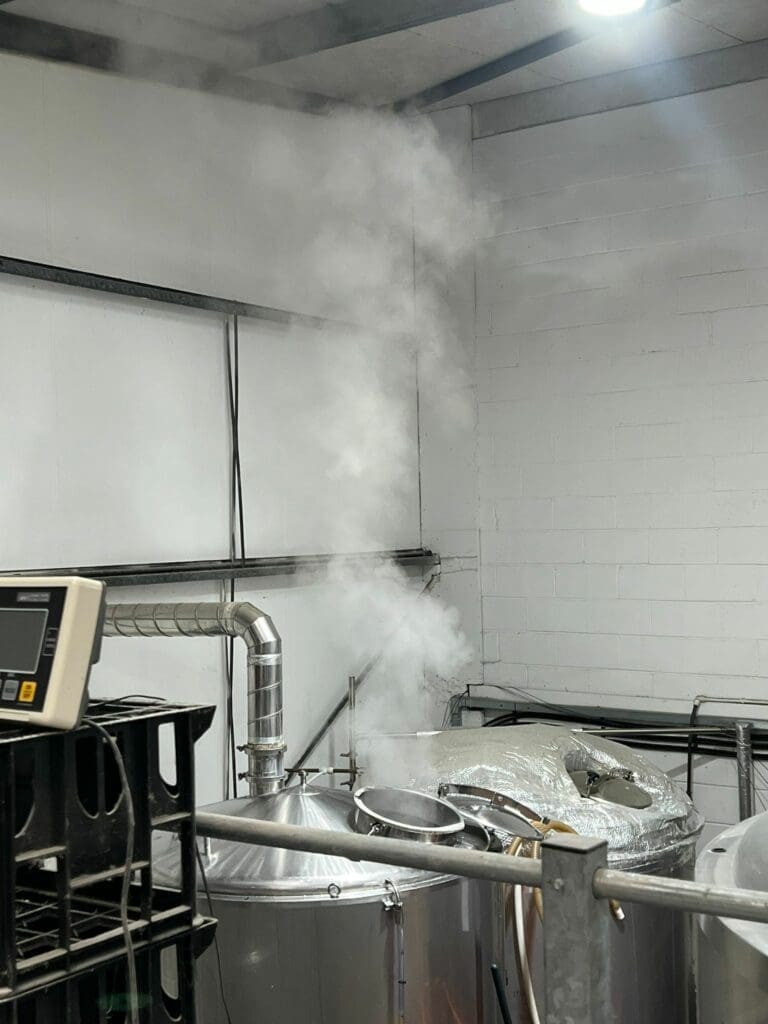

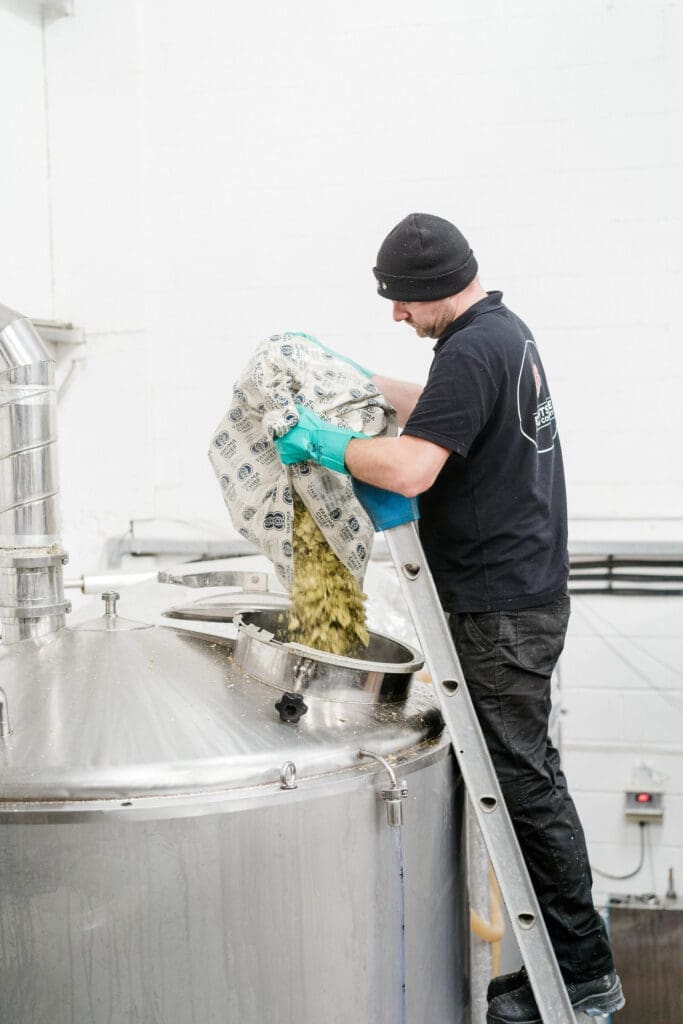



Once we were done with the boil, Martin had me connecting all sorts of pipes together so we could move the wort through the brewery to the next stage of the process, fermentation. It was from here that we began passing the beer through a heat exchanger. This reduced the temperature of the brew down to around 19 degrees Celsius, which is the temperature that we ferment Maverick (and most of our other ales) at.
It was during fermentation that we added in our yeast. This metabolises the sugars into alcohol all while at the same time creating the CO2 which lightly carbonates the beer.
During fermentation, we may add extra hops into the beer, in a process we call dry-hopping. You’ll find our hoppier beers (such as IPA) have likely been through a dry hopping stage which gives them their punch.
After fermentation, the beer will be at the correct ABV and ready to be either casked or kegged.
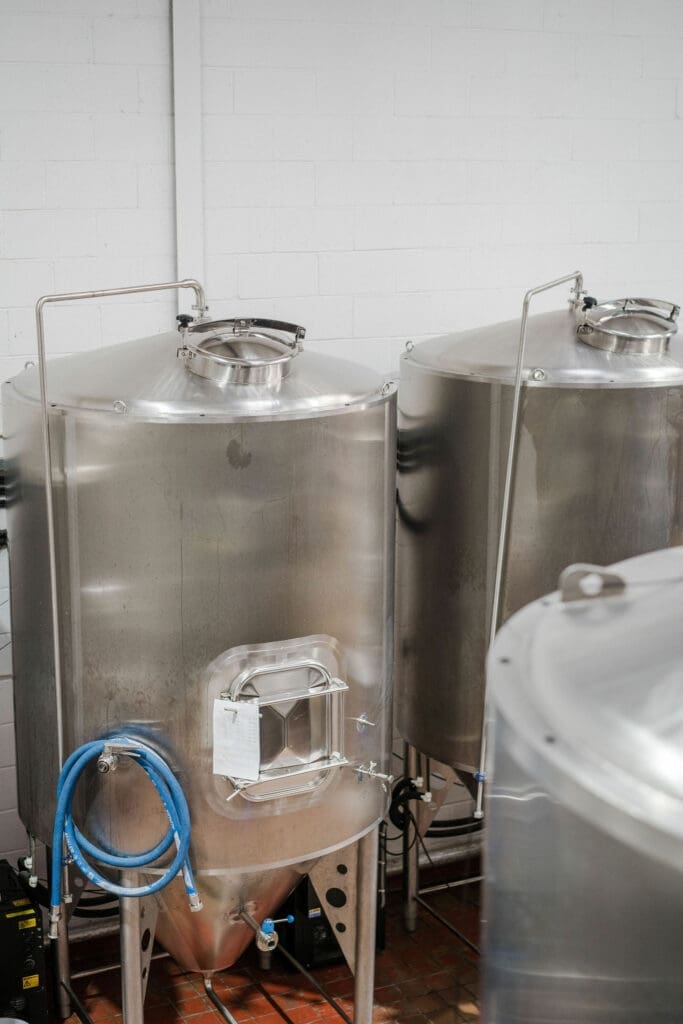

Do you know what’s important when you want to cask beer? Having clean casks! That’s why I spent well over an hour on my brew day working through a pile of empties which needed stripping, jet washing and then putting onto our cask washer. The mix of hot water and food-safe chemicals gets rid of any nasties and sterilises the cask, ready to be filled with beer.


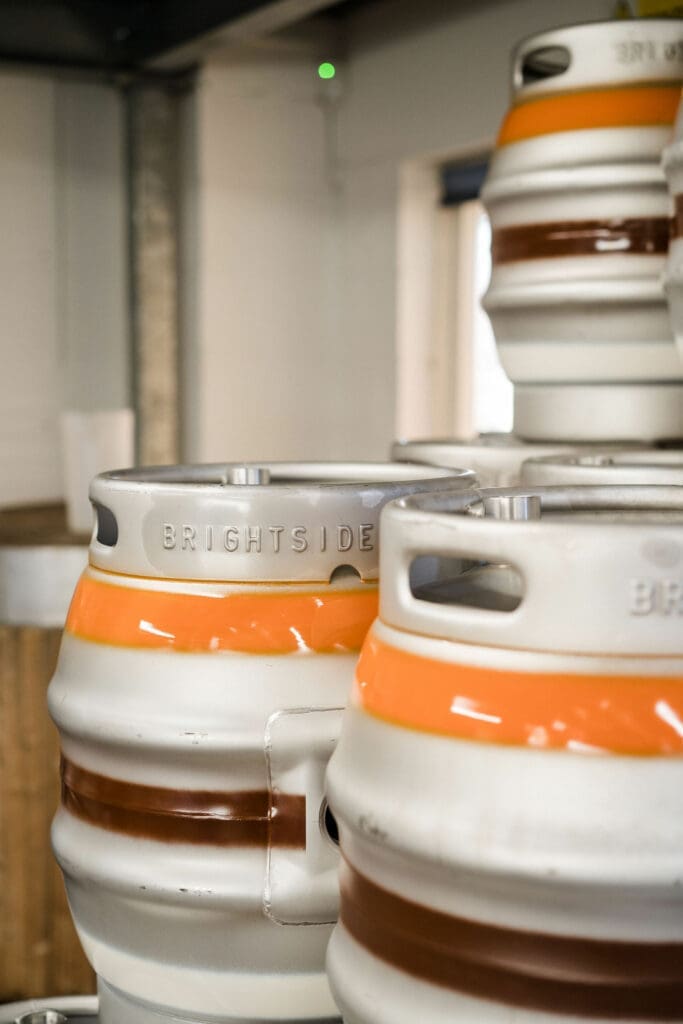

For casking, we fill them straight from the fermentation vessels. Martin explained that before we cask any beer, we had to run plenty off to clear any sediment (yeast, hops, grains) that might have settled in the fermenter. When the beers running clear, we were then able to begin filling our casks. To do this, we use a small length of hose which fills a cask (72 pints) in around 18 seconds – That’s 4 pints PER SECOND!
Once we’ve filled and plugged the cask, it’s off to the chiller where the beer will condition for 10 days at 16 degrees Celsius. This gives the beer plenty of time to mellow out and for the flavours of the beer to come together. It also means the beer is given time to produce any final CO2 which gives the beer it’s gentle fizz when it’s poured in your local.
If we’re kegging the beer, we send what’s known as an Arlington to our bottling/kegging partners – They send us the filled kegs back which are pressurised (things such as lagers and IPAs are usually kegged, with our ales being casked on site).
After all that, it’s time for the most important part. We’ve produced a load of great tasting beer and it’s time to start drinking it. Whether you enjoy a pint of The Mancunian in your local, or a couple bottles of Maverick at home, you can drink easy knowing the efforts we went to, to make your beer.
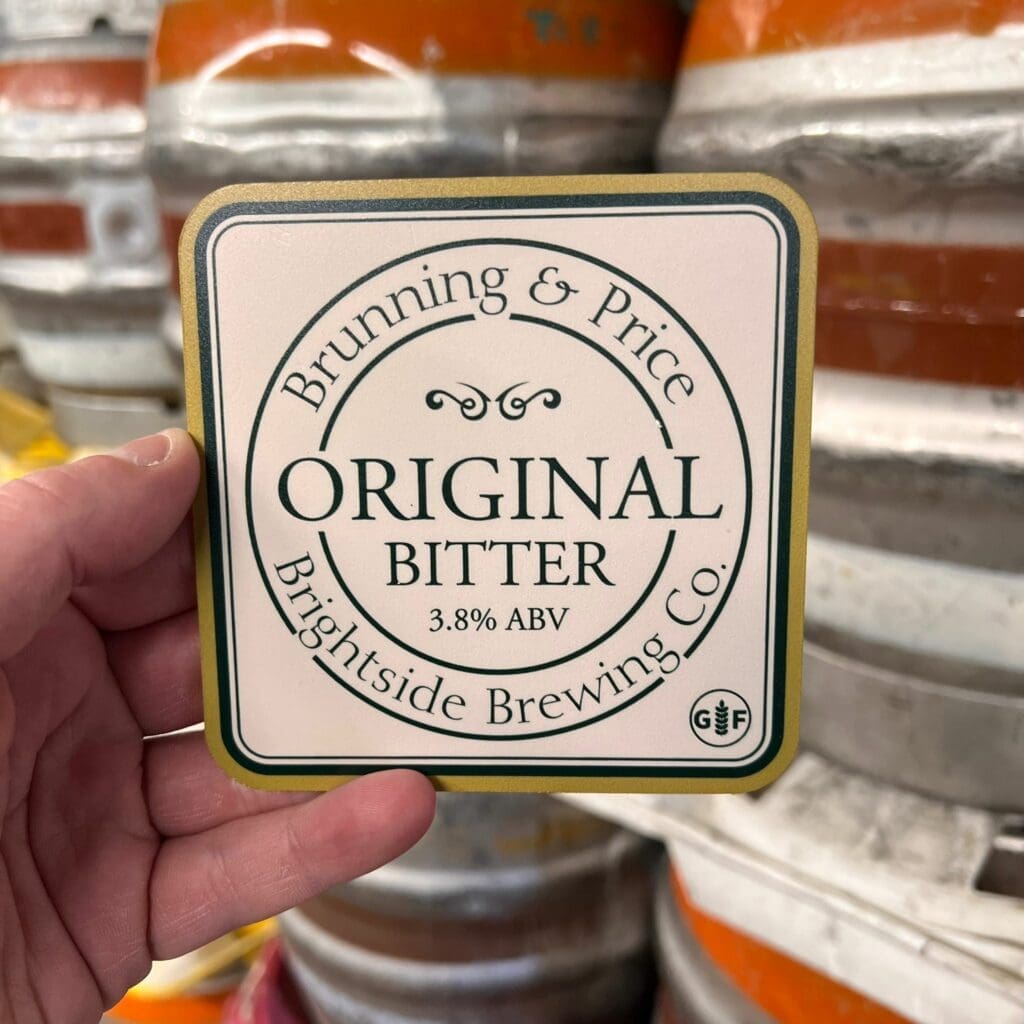





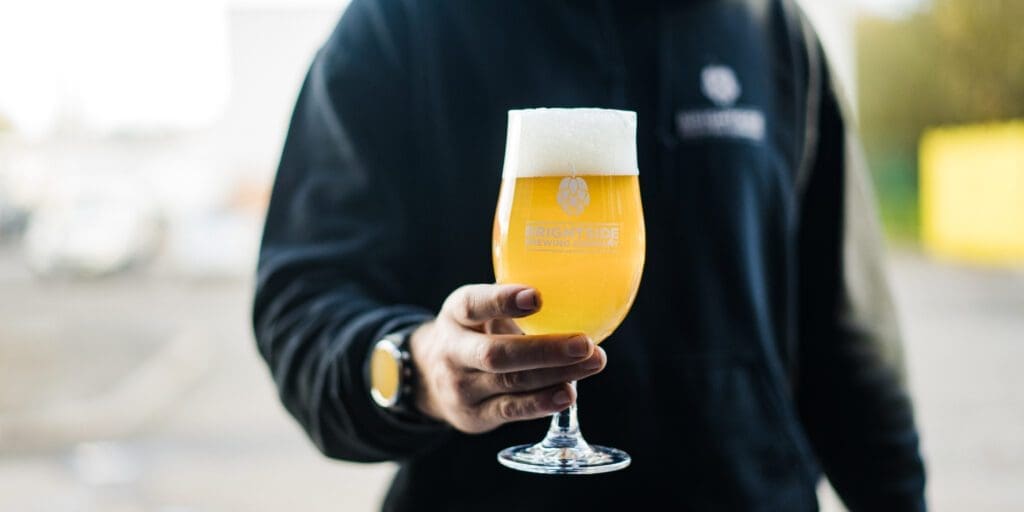

Cheers!
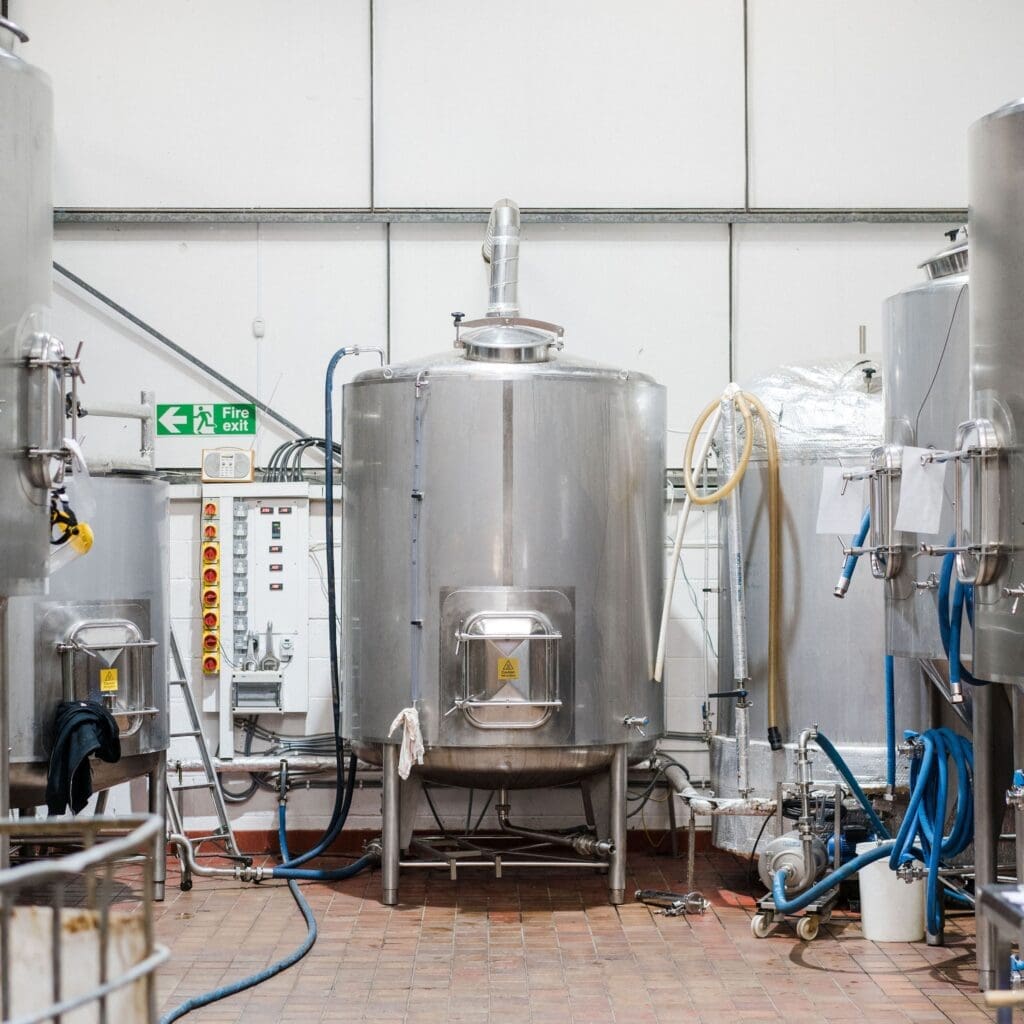

Unit 10, Dale Industrial Estate
Radcliffe
Manchester
M26 1AD
Home
Buy Beer Online
Trade
Gluten Free & Vegan Beer
Blog
Contact Us
Brewery & Sales
This site is protected by reCAPTCHA and the Google Privacy Policy and Terms of Service apply. View our website Terms & Conditions. View our Shop FAQs. View our Sitemap.